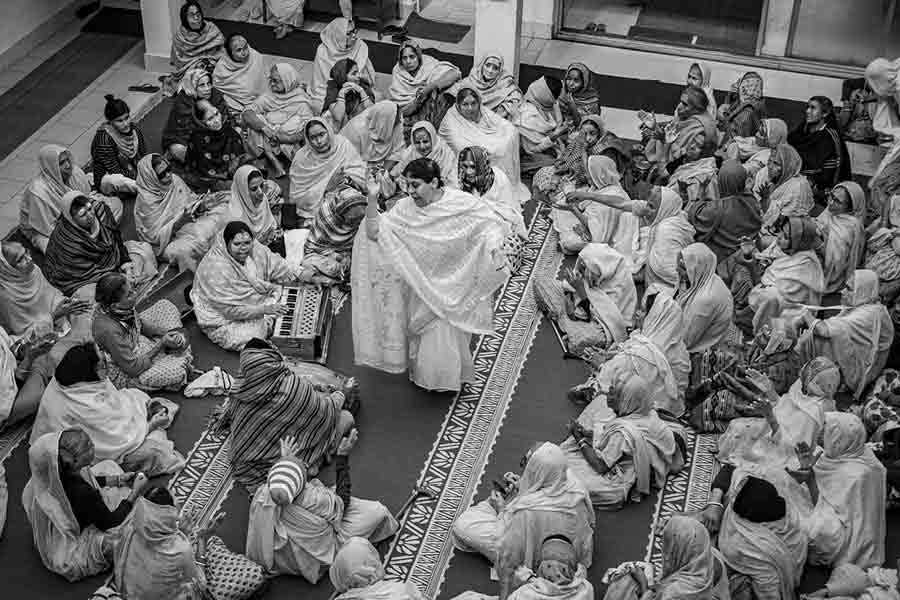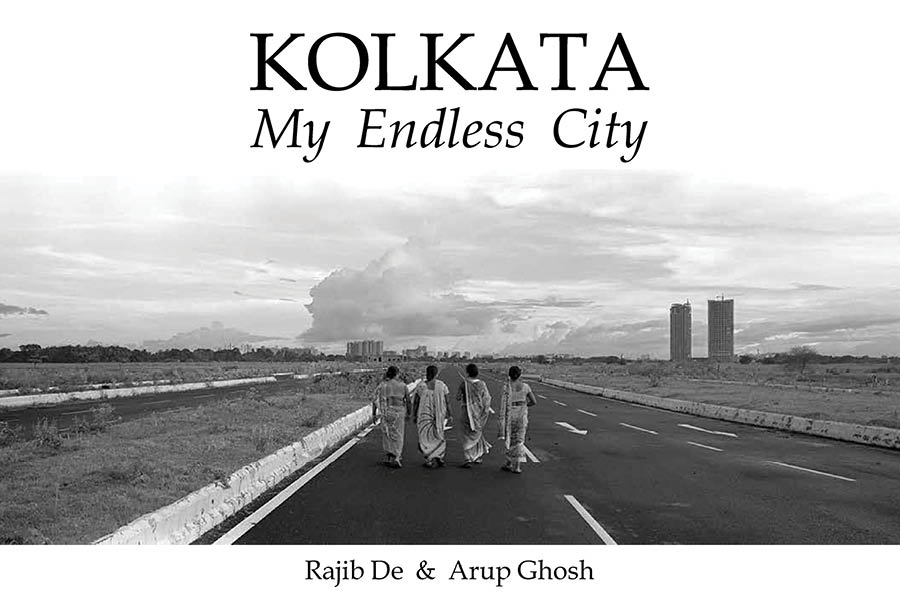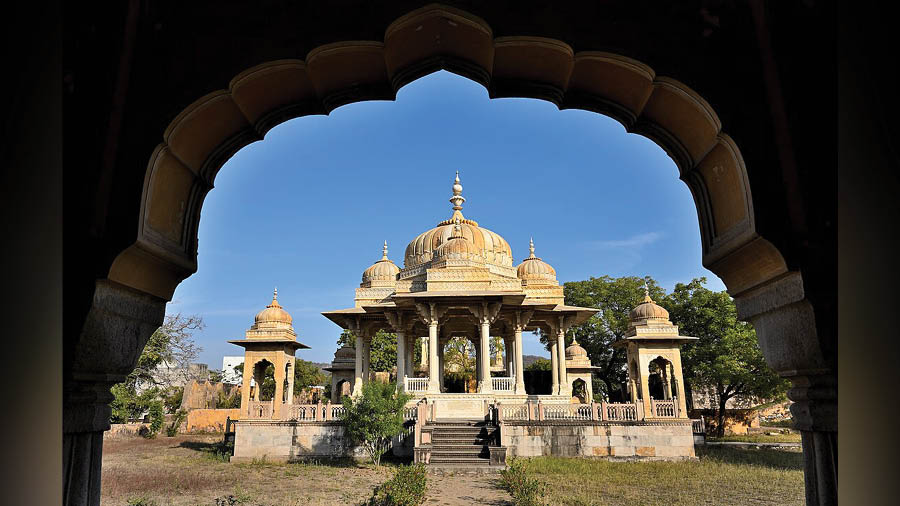For centuries, the identities of countless women have been defined by and contained within that of their husbands. Following the passing of their husbands, their existence has been hollowed out, as if they were no longer alive themselves. Many such women have found shelter, solidarity and sisterhood in the city of Vrindavan in Uttar Pradesh. A recent exhibition, called ‘Lest We Forget’, recounted the stories of some of these women residing in Winnie Singh’s Maitri ashram in Vrindavan. The exhibition was curated by Kounteya Sinha and took place at the Kolkata Centre for Creativity (at Anandapur, on the EM Bypass) between January 13 and 19.
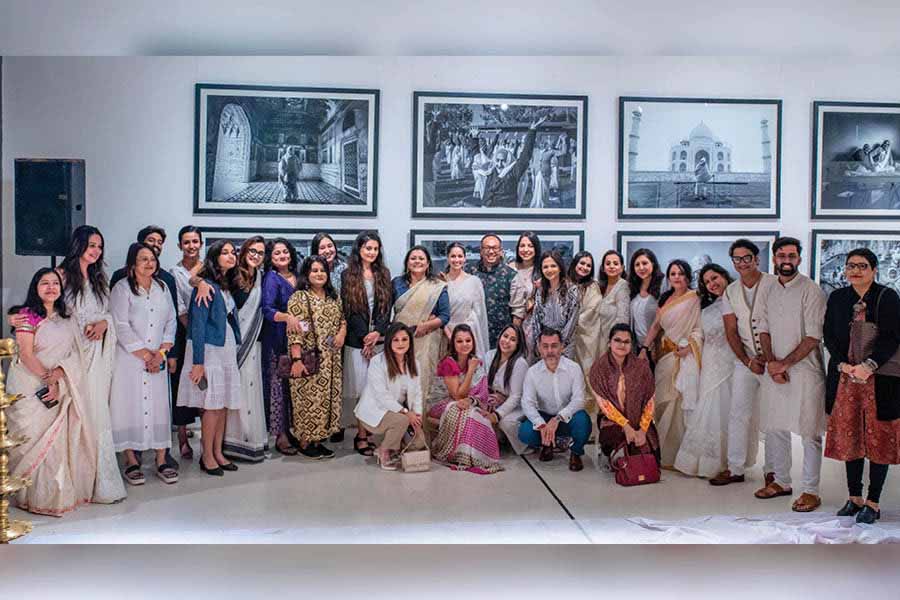
The entire organising team along with guests at the exhibition Courtesy Kounteya Sinha
The event was inaugurated by C.V. Ananda Bose, governor of West Bengal, with the opening graced by filmmakers Onir and Aniruddha Roy Chowdhury alongside actors Jaya Ahsan, Alexandra Taylor and Parno Mittra. However, the guest of honour for the event was Bengal’s oldest widow in Vrindavan, Renu Ma, who turned 106 only two days prior to the opening. Elated upon witnessing the crowd, she received the honour of the governor rechristening the state government’s compassion fund for cancer care and education as the Renu Ma Fund along with the Raj Bhavan promising to fully finance her care.
Photographed by Kounteya Sinha and Rana Pandey over a period of one month, this sisterhood in white featured Oeindrila Ray Kapur as creative director and Nilayan Chatterjee as editor, with Suprovo Tagore on lights and sound.
‘A woman from Bengal would prefer to beg with dignity than stay in a palace with indignity’

Renu Ma, who turned 106 two days before the event, was a guest of honour at the event Courtesy Kounteya Sinha
“This is the first time that the nuances of the changes in the lives of these women have been documented from inside the precincts of the ashram. Among the roughly 20,000 widows of Vrindavan, it’s estimated that 90 per cent are from Bengal. It’s often said that a woman from Bengal would prefer to beg with dignity than stay in a palace with indignity,” remarked Sinha. Patron Sujata Todi from Shrachi was touched by the exhibition and said: “This show is a heart-wrenchingly beautiful journey. It has so much positivity on a subject that has always been looked at with grief.”
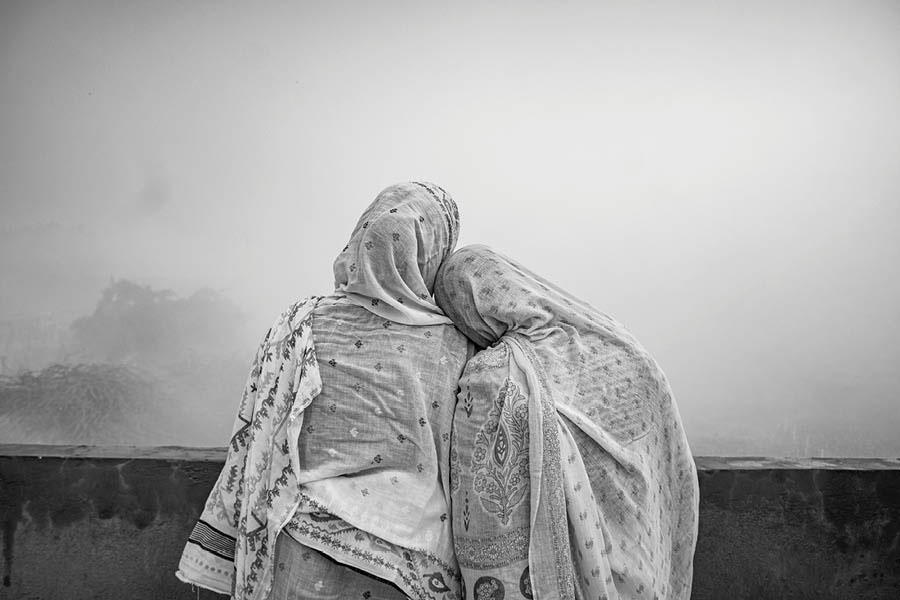
All the pictures displayed at the exhibition were in monochrome, and captured the life and emotions of Vrindavan's widowed women Kounteya Sinha and Rana Pandey
Narrated in monochrome, the photographs featured frames of Sabitri Ma, Shovha Dashi, Mukta Pal, Kamla Chatarjee, Andula Dasi, Rajkumari Saha, Krishna Ghosh, Gaitri Mukherjee, Promila Ghosh, Susila Pandey, Kalyani Rai and Vimla Devi, among others. Among the scenes depicted in the photographs were sisters lying in each other’s laps, revelling in joy while filling in the pages of children’s colouring books, reminiscing about their lives as thespians, congregating in joyous dance and reliving their youth by strewing flowers across strands of their hair, to name a few.
‘When they reached the Taj, they became children, scurrying around, excited, overwhelmed’
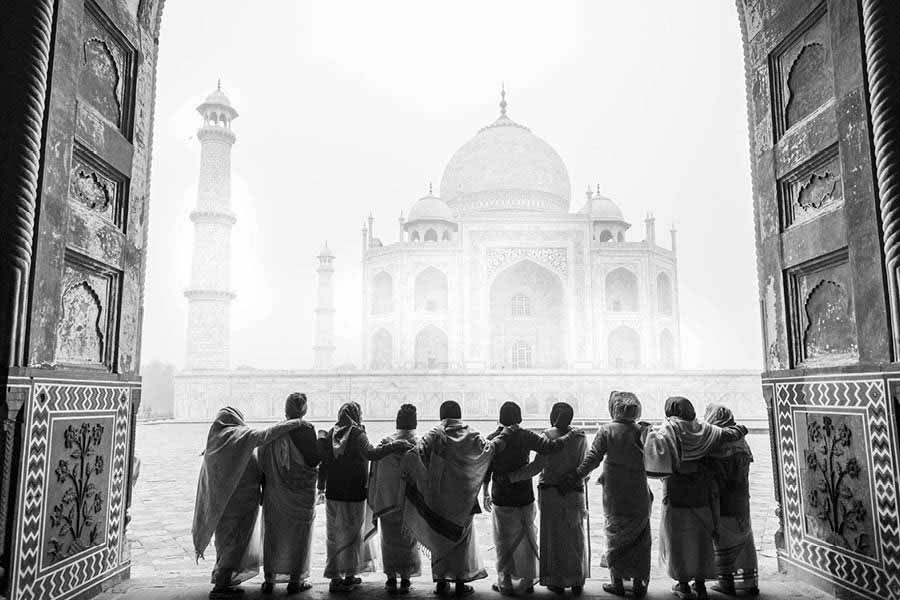
A moment from the women’s visit to the Taj Mahal, which brought out a childlike excitement on their faces Kounteya Sinha and Rana Pandey
While Sinha photographed their lives, he discovered that most of these women yearned to witness a landmark that lay only a couple of hours away from their ashram — the Taj Mahal. One morning, before dawn, Sinha and Pandey set off on a journey to make their dream come true. “When they reached the Taj, they became children, scurrying around, excited, overwhelmed. Their faces were beaming as they ran around the courtyards,” recalled Sinha, as he showed the photograph of them gazing towards the testament of love with hands over each others’ shoulders, reclaiming their hearts from familial strife and handing them over to their fellow sisters in white. “On my final day in Vrindavan, Sulisa Ma summoned me to her room. Opening an old cupboard, she retrieved a shawl (probably a donation she had received) and entrusted it to me, enveloping me in a warm hug,” narrated Pandey.
